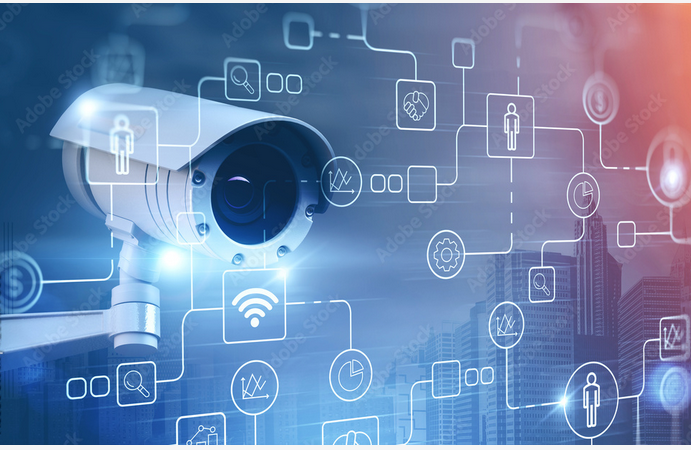Modern CCTV cameras utilize advanced technologies like machine learning, facial recognition, car plate recognition, cloud storage, remote monitoring, and thermal imaging. These innovations have transformed security systems, providing enhanced crime prevention and rapid response capabilities.
Since their inception in the 1940s, CCTV cameras have undergone remarkable evolution. Initially serving as questionable deterrents with blurry footage for serious criminal cases, they have now become formidable weapons in the fight against crime. In this article, we provide an overview of the cutting-edge technologies driving modern security cameras, which are now integral to both business and home security systems. From Artificial Intelligence to thermal imaging, property owners have access to a level of protection that seems straight out of science fiction.
Machine Learning Algorithms
Modern advancements in CCTV technology have been fuelled by the significant upgrades in computational power witnessed in recent years. The rise of Artificial Intelligence has revolutionized the world, and security cameras have harnessed the power of image recognition through machine learning. There are now even algorithms which automatically detect suspicious behaviour from surveillance camera footage.
Facial Recognition of Intruders
Machine learning has led to significant advancements in facial recognition technology. With the aid of high-resolution cameras, it has become increasingly effortless to digitally detect a person within a camera’s field of view. This technology finds numerous applications, including crime prevention and criminal prosecution.
If someone who is already considered suspicious appears on your camera feed, you can receive an immediate alert in case your security personnel fail to recognize or notice them. This enables you to take proactive action by asking them to leave or contacting law enforcement before any harm occurs.
Additionally, capturing the image of a burglar on your camera after a crime allows you to share the footage with the police and the surrounding community. This enables nearby homes, businesses, and law enforcement agencies to compare the captured face with their own facial recognition databases. Such collaboration can expedite police investigations and contribute to a safer community.
Car License/Registration Plate Recognition
Facial recognition technology synergizes well with the ability to quickly identify and read car number plates. While it may be challenging for a person to immediately recognize a number plate, high-resolution cameras can easily decipher the digits and letters. By linking the number plate with a person’s existing presence or facial features, it serves as an extension of their identity.
Proactively, this method functions similar to facial recognition. If a suspicious car appears within the view of any CCTV camera, it instantly triggers an alarm. This allows your security personnel, staff, or the police to prepare for a response even before the person exits the car or attempts to enter your property.
Similar to facial recognition, the number plate of an intruder’s car can significantly aid the police in narrowing down their location and potentially identifying them, especially if the car is not stolen.
Cloud Storage
In the past 5-10 years, cloud storage has rapidly gained adoption, extending beyond merely backing up iPhone photos. CCTV systems have recently embraced cloud storage due to the substantial transfer speeds required for constantly uploading high-resolution footage.
Using cloud storage for CCTV footage offers three primary benefits: infinite/flexible capacity, no upfront cost, and reliable data backup and recovery.
Remote Monitored Camera Systems
Remote monitored CCTV systems grant you the ability to view your camera feed in real-time from anywhere in the world. This provides ultimate peace of mind, knowing that your property is under constant surveillance, 24/7.
Remote monitoring transforms security cameras from simple visual deterrents to active crime-fighting tools.
Integration with Alarm Sensors
Integrating surveillance cameras with alarm sensors, such as motion detection or glass break detection, ensures an instantaneous response to any intruders. This is achievable through built-in motion detection within the camera or, in newer models, by employing machine learning for automated intruder detection in the footage.
Upon triggering an alarm or receiving a motion detection alert, the camera feed can be immediately verified by either yourself or a security monitoring company. If the threat is valid and not a false alarm, you can alert the police within seconds.
Thermal Imaging Cameras
Thermal vision, or infrared imaging cameras, while not a new technology, deserves mention due to recent significant advancements. Infrared modes of cameras have traditionally lagged behind color images, but in recent years, they have made remarkable progress.
Thermal imaging enables cameras to continue providing footage even in dark conditions such as nighttime or dimly lit/unlit interior spaces. Additionally, it greatly simplifies fire detection. Modern cameras utilize machine learning in conjunction with thermal reading footage to swiftly detect fires and promptly alert you.
Conclusion: An Array of Available CCTV Technologies
In conclusion, modern CCTV cameras represent a significant leap forward in the realm of security. While they share the fundamental concept of recording footage of targeted areas, they are a world apart from the old analog cameras of the 1990s. Machine learning, thermal vision, and remote monitoring have elevated security cameras to an essential layer of any residential or commercial security system.




